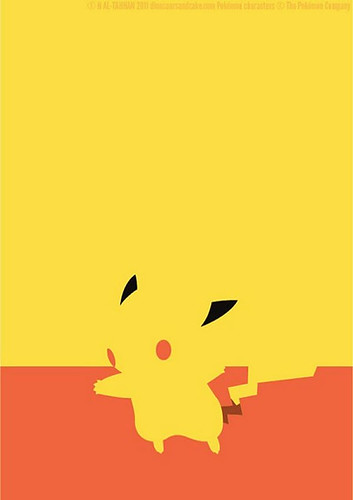GAMES. In her provocative new book
Reality Is Broken, researcher and game designer
Jane McGonigal presents a paradigm shift in our assumptions about what is possible in our lives -- at home, at work, in our relationships, shaping a better world. As she asks in the introduction, "Gamers want to know: Where, in the real world, is that gamer sense of being fully alive, focused, and engaged in every moment? Where are the bursts of exhilaration and creative game accomplishment? Where is the heart-expanding thrill of success and team victory? While gamers may experience these pleasures occasionally in their real lives, they experience them almost constantly when they're playing their favorite games.
"The real world just doesn't offer up as easily the carefully designed pleasures, the thrilling challenges, and the powerful social bonding afforded by virtual environments. Reality doesn't motivate us as effectively. Reality isn't engineered to maximize our potential. Reality wasn't designed from the bottom up to make us happy.
"And so, there is a growing perception in the gaming community: Reality, compared to games, is broken."
If you look upon games, especially online games, as mere escapism or a waste of time, think again. As psychologist Sonja Lyubomirksy said in her review of the book, "Reality Is Broken is the most eye-opening book I read this year. With awe-inspiring expertise, clarity of thought, and engrossing writing style, Jane McGonigal cleanly exploded every misconception I've ever had about games and gaming. If you thought that games are for kids, that games are squandered time, or that games are dangerously isolating, addictive, unproductive, and escapist, you are in for a giant surprise!"
McGonigal identifies four defining traits shared by the best games --
~ The goal is the specific outcome that players will work to achieve. It focuses their attention and continually orients ther participation throughout the game. The game provides players with a sense of purpose.
~ The rules place limitations on how players can achieve the goal. By removing or limiting the obvious ways of getting to the goal, the rules push players to explore previously uncharted possibility spaces. They unleash creativity and foster strategic thinking.
~ The feedback system tells players how close they are to achieving the goal. It can take the form of points, levels, a score, or a progress bar. Or, in its most basic form, the feedback system can be as simple as the players' knowledge of an objective outcome: "The games is over when ... " Real-time feedback serves as a promise that the goal is definitely achievable, and it provides motivation to keep on playing.
~ Finally, voluntary participation requires that everyone who is playing the game knowingly and willingly accepts the goals, the rules, and the feedback. Knowingness establishes common ground for multiple people to play together. And the freedom to enter or leave a game at will ensures that intentionally stressful and challenging work is experienced as safe and pleasurable activity.
Sprinkled throughout the book are fourteen Reality Fixes, concepts from gaming which are applicable to real life. For that is the ultimate message of Reality Is Broken -- not that we should seek to escape from the drudgery of work or an unfulfilling personal life, but rather that we can improve our work, enrich our personal lives, and ultimately (in multi-participant mode) we can better the world by applying those qualities which make gaming so successful and appealing. Consider: In the United States alone, there are 183 million active gamers (individuals who play computer or video games an average of thirteen hours a week). Globally, the online gamer community counts more than three times this number, as a conservative estimate. This is a wealth of talent, commitment, and imagination begging to be tapped. A few forward-thinking research, humanitarian, and conservation groups are doing just that, through well-designed massive multiplayer games (MMGs) which serve the needs of humans and nature, as McGonegal documents. When we feel that we have a stake in a work or a community project, when we are engaged by being shown not only our small part but also the larger goal, and when our ideas are sought out for achieving those goals, we become more than cogs in the machine. We design, own, and enjoy our participation in life. What could be finer?
ORCHESTRAS. In his 2005 book
Blink, prolific writer
Malcolm Gladwell examines our ability to gauge what is really important from a very narrow period of experience, a process he calls "thin-slicing". Gladwell explores a range of situations in which we make snap judgments, and clarifies the unconscious mental processes at work. In a
previous post I made oblique reference to the precepts in
Blink in the context of police work. In parting tribute, I'd like to quote another passage, this one set in another realm entirely.
"The world of
classical music -- particularly in its European home -- was until very recently the preserve of white men. Women, it was believed, simply could not play like men. They didn't have the strength, the attitude, or the resilience for certain kinds of pieces. Their lips were different. Their lungs were less powerful. Their hands were smaller. That did not seem like a prejudice. It seemed like a fact, because when conductors and music directors and maestros held auditions, the men always seemed to sound better than women. No one paid much attention to how auditions were held, because it was an article of faith that one of the things that made a music expert a music expert was that he could listen to music played under any circumstances and gauge, instantly and objectively, the quality of the performance. Auditions for major orchestras were sometimes held in the conductor's dressing room, or in his hotel room if he was passing through town. Performers played for five minute or two minutes or ten minutes. What did it matter? Music was music. Rainier Kuchl, the concertmaster of the Vienna Philharmonic, once said he could instantly tell the difference with his eyes closed between, say, a male and a female violinist. The trained ear, he believed, could pick up the softness and flexibility of the female style.
"But over the past few decades, the classical music world has undergone a revolution. In the United States, orchestra musicians began to organize themselves politically. They formed a union and fought for proper contracts, health benefits, and protections against arbitrary firing, and along with that came a push for fairness in hiring. Many musicians thought that conductors were abusing their power and playing favorites. They wanted the audition process to be formalized. That meant an official audition committee was established instead of a conductor making the decision all by himself. In some places, rules were put in place forbidding the judges from speaking among themselves during auditions, so that one person's opinion would not cloud the view of another. Musicians were identified not by name but by number. Screens were erected between the committee and the auditioner .... And as these new rules were put in place around the country, an extraordinary thing happened: orchestras began to hire women.
"In the past thirty years, since screens became commonplace, the number of women in the top U.S. orchestras has increased fivefold .... What the classical music world realized was that what they had thought was a pure and powerful first impression -- listening to someone play -- was in fact hopelessly corrupted .... In Washington, DC, the National Symphony Orchestra hired Sylvia Alimena to play the
French horn. Would she have been hired before the advent of screens? Of course not. The French horn, like the trombone, is a 'male' instrument. More to the point, Alimena is tiny. She's five feet tall. In truth, that's an irrelevant fact. As another prominent horn player says, 'Sylvia can blow a house down.' But if you were to look at her before you really listened to her, you would not be able to hear that power, because what you saw would so contradict what you heard. There is only one way to make a proper snap judgment of Sylvia Alimena, and that's from behind a screen. (Pictured below is Sarah Willis, who plays French horn with the Berlin Philharmonic.)
"Before the advent of blind auditions, the percentage of women in major symphony orchestras in the United States was less than 5 percent. Today it's closer to 50 percent."
The thrust of Blink is not to suggest that all snap decisions are misleading. Rather, the book explores the processes going on in our brains, as well as our cultural assumptions, to guide us in deciding when "thin slicing" is adaptive, and when it is not. It is an invaluable distinction.































